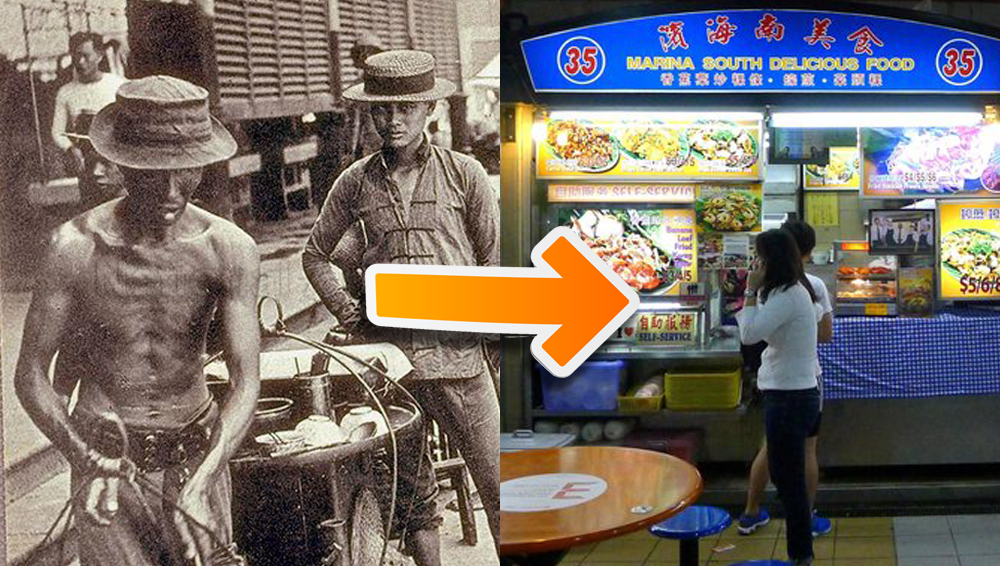One of Singapore's most fascinating and craftiest creations is the hawker centre.
Established as part of the country's governance by convenience model that Singapore has since spent the past few decades perfecting, hawker centres are part of this long-standing legacy of putting things in order in an otherwise unwieldy world.
A hawker centre essentially shackles the vendor to a spot, which is why the idea of a hawker centre is actually an oxymoron.
The very definition of a hawker is someone who travels around to sell things.
Hawking history
The hawking tradition goes way back.
Travelling hawkers, also known as itinerant hawkers, were quite a common sight in the 19th to mid-20th centuries. They went around selling everything from raw produce to cooked food.
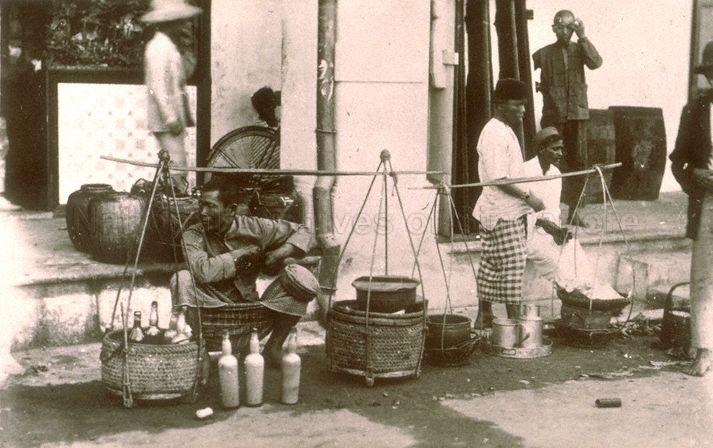 Malay hawkers in the early 1910s. Via NAS.
Malay hawkers in the early 1910s. Via NAS.
Many new immigrants took to hawking because it was a low cost business that required little skill.
There were many different types of hawkers -- those who sold raw produce (such as vegetables and poultry), those who peddled sundries (such as daily necessities) and services (like barbers), and those who sold cooked food. The last group made up the majority of travelling hawkers.
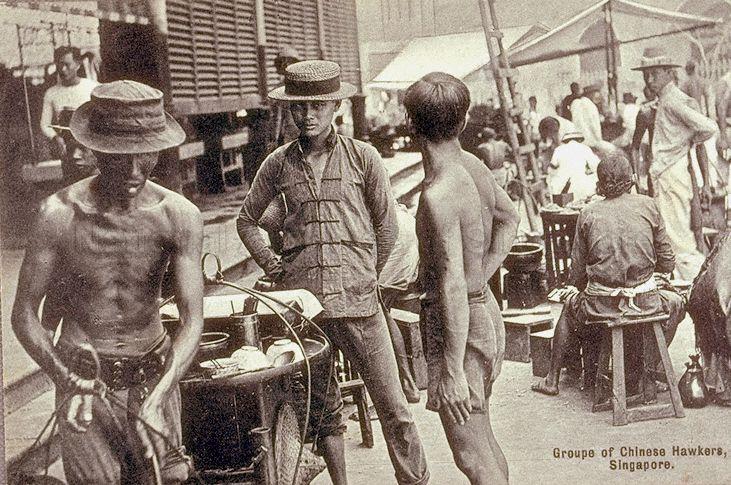 Chinese hawkers in 1915. Via NAS.
Chinese hawkers in 1915. Via NAS.
Food hawkers
Food hawkers played an important role in society. In the city, hawkers provided affordable food to coolies and other workers. In the suburbs, food hawkers served families who did not cook at home.
These travelling hawkers would follow established routes and accrue regular customers along the way, sometimes alerting customers to their presence by playing bamboo sticks or bells.
For example, the tok tok noodle man would beat his bamboo instrument, producing that familiar tok tok sound.
Read: Here’s the sound of the Tok Tok man, bringer of good noodles
Hawkers back then weren't exactly like modern food delivery services, such as Foodpanda or Deliveroo, but they did bring the food they sold closer to where people lived.
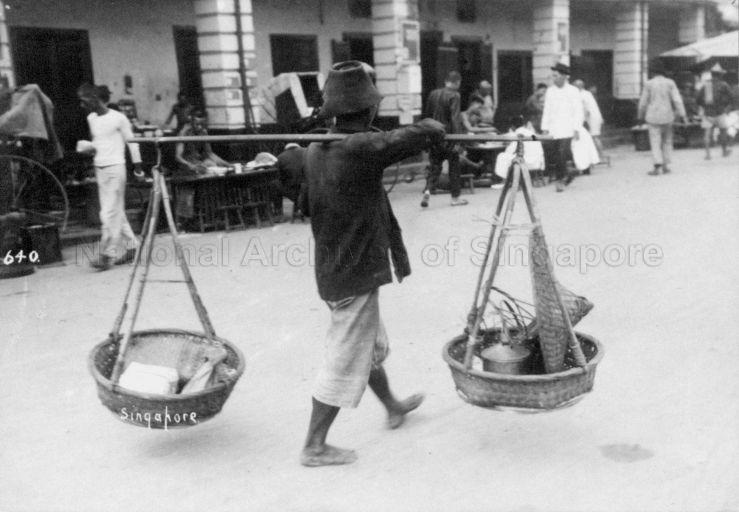 A hawker carrying his wares in 1920. Via NAS.
A hawker carrying his wares in 1920. Via NAS.
[related_story]
Hawker groupings
According to Infopedia, in the 1930s, there were about 6,000 licensed travelling hawkers and and estimated 4,000 more unlicensed ones.
Different ethnic or dialect groups tended to operate as a collective and sold specific items. The Hokkiens were known to sell coffee and cooked food throughout the city. The Teochew hawkers usually sold fresh fruits and vegetables.
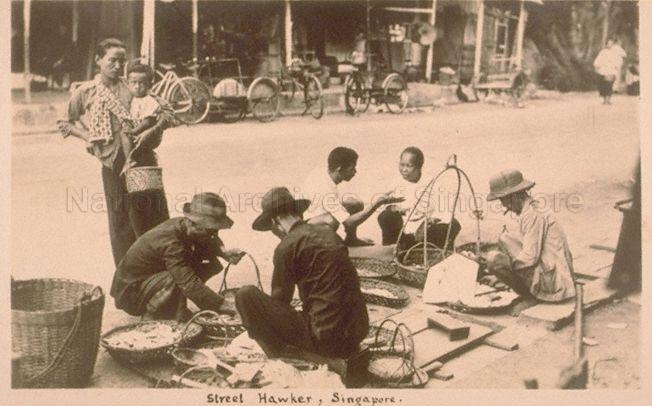 Street hawkers in 1920. Via NAS.
Street hawkers in 1920. Via NAS.
Malay and Javanese hawkers were found around Middle Road selling satay and clothes, while Indian hawkers could be found selling rojak, vadai, and muruku.
Hygiene and other problems
Hawking posed several hygiene-related problems, including food contamination, improper disposal of food waste, and general uncleanliness. Rodent infestation, disease (such as cholera and typhoid) were common.
Often, traffic on busy roads would also be impeded by stray hawkers.
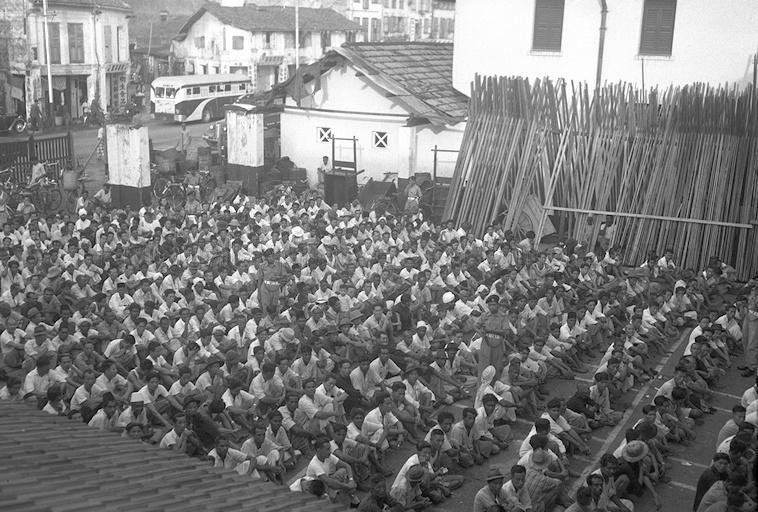 Hawkers waiting to get their licence at the Havelock Road Licensing Centre in 1952. Via NAS.
Hawkers waiting to get their licence at the Havelock Road Licensing Centre in 1952. Via NAS.
Licensing and regulation
By 1919, itinerant hawkers, day hawkers, and night hawkers were required to be licensed by the colonial government.
Licensing enabled the government to keep the growth of hawkers down and control where they could operate their businesses. Inspections were carried out regularly to weed out illegal hawkers.
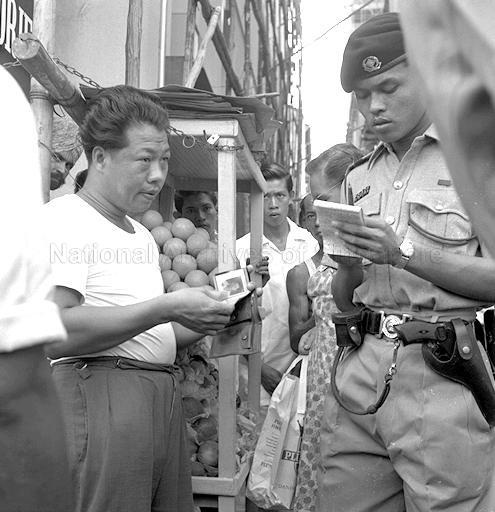 An unlicensed hawker at Raffles Place being booked. Via NAS.
An unlicensed hawker at Raffles Place being booked. Via NAS.
Itinerant hawkers were also grouped together and allocated designated locations to operate in, in order to curb the haphazard nature of travelling hawkers.
Makeshift hawker centres such as New Bridge Road Hawker Centre and Glutton's Square (also known as the Orchard Road Carpark Hawker Centre) were a couple of examples.
 Street hawkers preparing for business in 1971. Via NAS.
Street hawkers preparing for business in 1971. Via NAS.
Throughout the 1960s to 1980s, the government also conducted islandwide registration exercises for hawkers and started constructing more proper markets and hawker centres to house these travelling hawkers.
Between 1971 and 1986, the government also went on a hawker centre building spree.
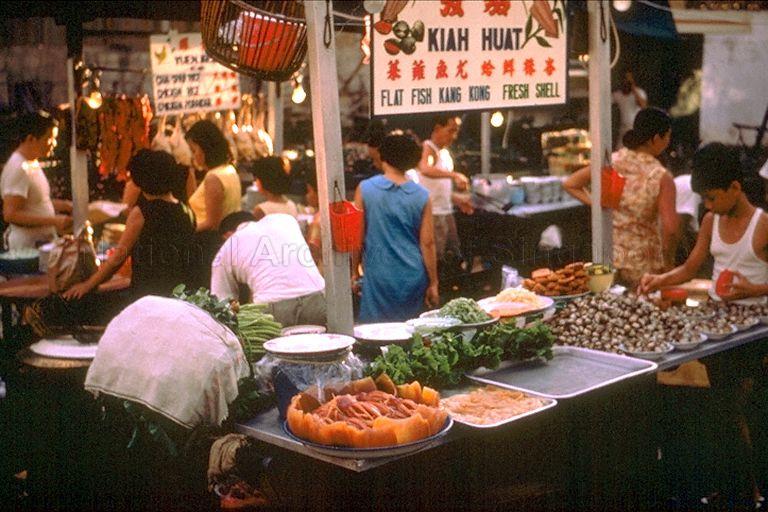 Hawker centre hawker selling seafood, kang kong, and cockles in 1971. Via NAS.
Hawker centre hawker selling seafood, kang kong, and cockles in 1971. Via NAS.
Today, the management and consolidation of hawker centres come under the care of the National Environment Agency (NEA). NEA oversees the building, maintenance, and upgrading of hawker centres, as well as the licensing and tenancy of hawkers.
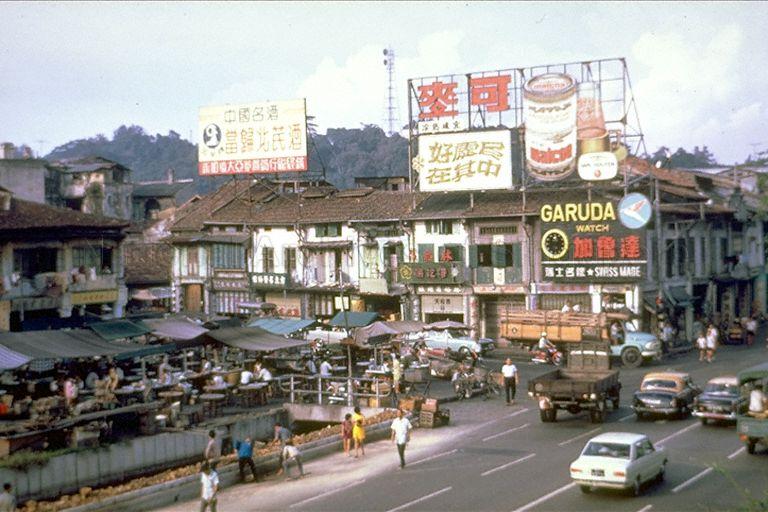 New Bridge Road Hawker Centre in 1970. Via NAS.
New Bridge Road Hawker Centre in 1970. Via NAS.
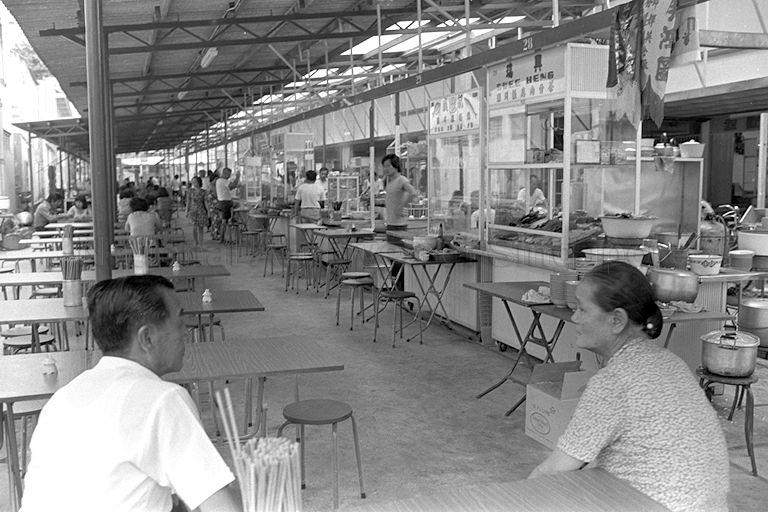 A temporary hawker centre behind Capitol Shopping Centre (today's Capitol Theatre) which housed hawkers relocated from Hock Lam Street in 1977. Via NAS.
A temporary hawker centre behind Capitol Shopping Centre (today's Capitol Theatre) which housed hawkers relocated from Hock Lam Street in 1977. Via NAS.
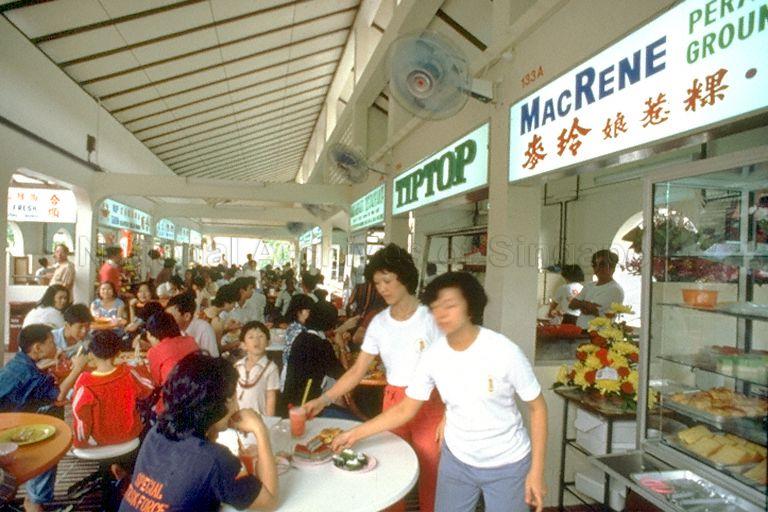 Tanglin Hawker Centre in 1980. Via NAS.
Tanglin Hawker Centre in 1980. Via NAS.
[related_story]
In all, NEA currently manages more than 100 hawker centres and markets in Singapore.
Food hawkers have come a long way since Singapore's early days -- from roadside stalls to hawker centres. We even have more "swanky" options in the form of air-conditioned food courts.
Which is perhaps even more ironic given that today, we choose to eat in food courts that are made to resemble roadside stalls.
¯\_(ツ)_/¯
 Food Republic Vivocity. Via.
Food Republic Vivocity. Via.
Top image via NAS and Tripadvisor.
If you like what you read, follow us on Facebook, Instagram, Twitter and Telegram to get the latest updates.
